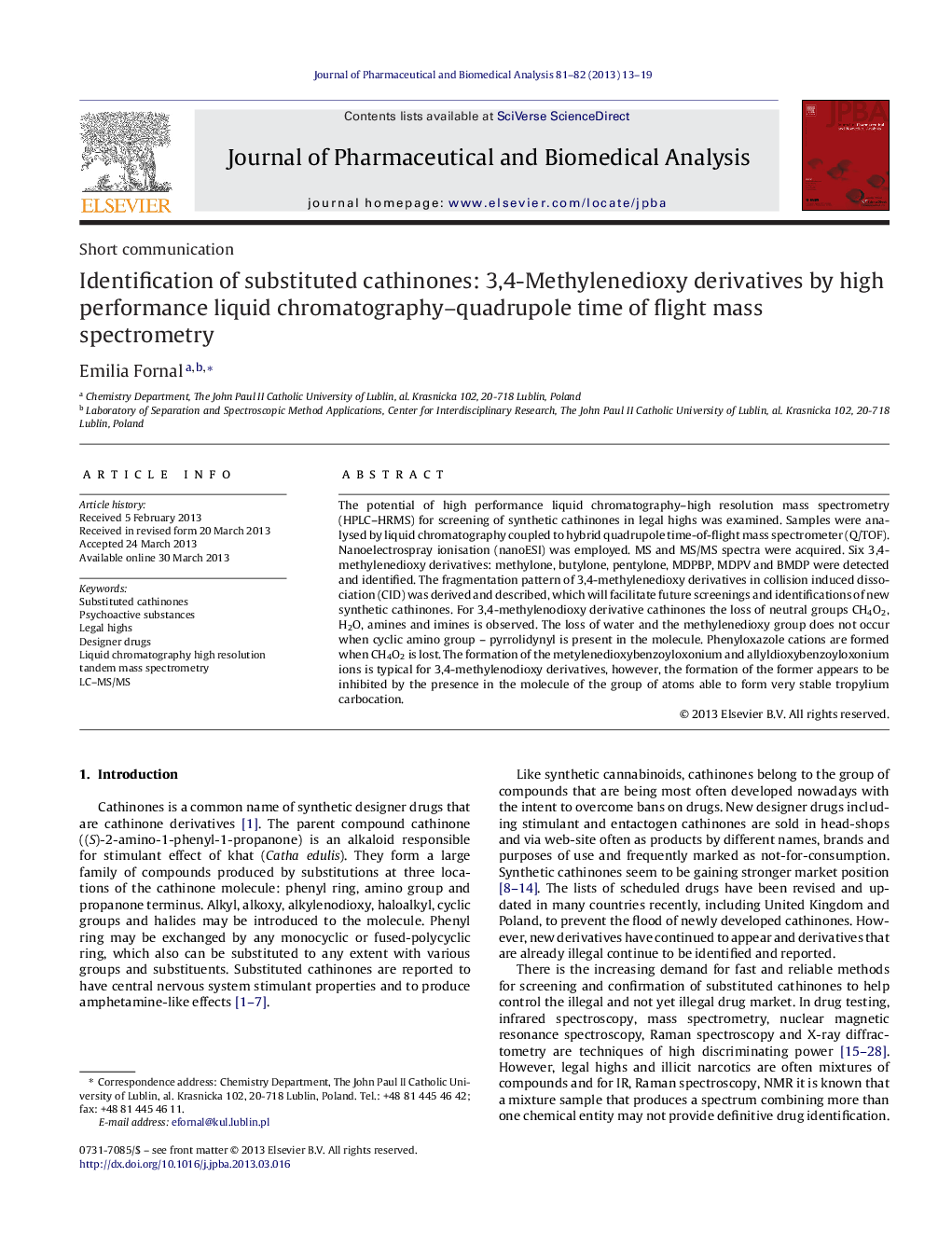| Article ID | Journal | Published Year | Pages | File Type |
|---|---|---|---|---|
| 1221242 | Journal of Pharmaceutical and Biomedical Analysis | 2013 | 7 Pages |
•HPLC–HRMS screening of legal highs for substituted cathinones reported.•HPLC-Q/TOF product spectra of six 3,4-methylenodioxy derivatives of cathinone discussed.•CID fragmentation pattern of 3,4-methylenodioxy derivatives of cathinone derived.
The potential of high performance liquid chromatography–high resolution mass spectrometry (HPLC–HRMS) for screening of synthetic cathinones in legal highs was examined. Samples were analysed by liquid chromatography coupled to hybrid quadrupole time-of-flight mass spectrometer (Q/TOF). Nanoelectrospray ionisation (nanoESI) was employed. MS and MS/MS spectra were acquired. Six 3,4-methylenedioxy derivatives: methylone, butylone, pentylone, MDPBP, MDPV and BMDP were detected and identified. The fragmentation pattern of 3,4-methylenedioxy derivatives in collision induced dissociation (CID) was derived and described, which will facilitate future screenings and identifications of new synthetic cathinones. For 3,4-methylenodioxy derivative cathinones the loss of neutral groups CH4O2, H2O, amines and imines is observed. The loss of water and the methylenedioxy group does not occur when cyclic amino group – pyrrolidynyl is present in the molecule. Phenyloxazole cations are formed when CH4O2 is lost. The formation of the metylenedioxybenzoyloxonium and allyldioxybenzoyloxonium ions is typical for 3,4-methylenodioxy derivatives, however, the formation of the former appears to be inhibited by the presence in the molecule of the group of atoms able to form very stable tropylium carbocation.
Graphical abstractFigure optionsDownload full-size imageDownload as PowerPoint slide
